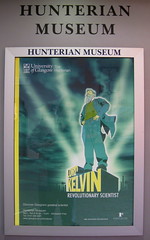A friend asked how I come up with these links, so I thought I’d share with you just what goes into this whole process.
I subscribe to 119 different RSS feeds, and I read them in Google’s Reader. To make the reading process most efficient, I’ve installed 2 GreaseMonkey scripts: Google Reader for wider screens, and Google Reader Absolutely Compact. These get rid of the frills and wasted space (and the stupid “like” button).
I go through usually by category (news, photography, food, etc.), popping things open in new tabs to read, then marking them with a “star” if they’re something to be shared out. Those things which get shared out are usually from the news category, which contains feeds from such sites as the Association for Computing Machinery, Der Spiegel, the SF Chronicle’s Technology section, and so on. (I had to abandon Science Daily, because the volume was simply too much to handle!)
After I’ve let things build up for about a week, sometimes two, I harvest all of my “starred items,” organize them into categories, and pop them into a post. I used to gather up all of the links manually, which was incredibly tedious. I wrote a little .php script to do that for me, though, and now can just deal with categorizing them, which takes some time as well. So, every day I probably read news feeds for about an hour, and once a week I spend another hour or so gathering and sorting.
The links I select are usually ones which I think would be of interest to my department, but I also try to get things which are simply important to the world (live in the US and wonder about volcanoes? USGS can tell you which to worry about!).
Happy Sunday!
-D
[The first photo is of Lord Kelvin, “Revolutionary Scientist.” The second is Che Guevarra, wearing the famous See You Jimmy Hat (Tam-o-Shanter) with attached “ginger locks”; this is probably making fun of both Che and The Tartan Army.]


AAAAKKKKKK…. the scrips are not for Chrome!
Ahh. Sorry. Forgot to say: those scripts only work with FireFox.
Of course, I would wonder why anybody would use something else….
thanks for sharing the process. very interesting. i appreciate your links suggestions even more now. 😉
paz